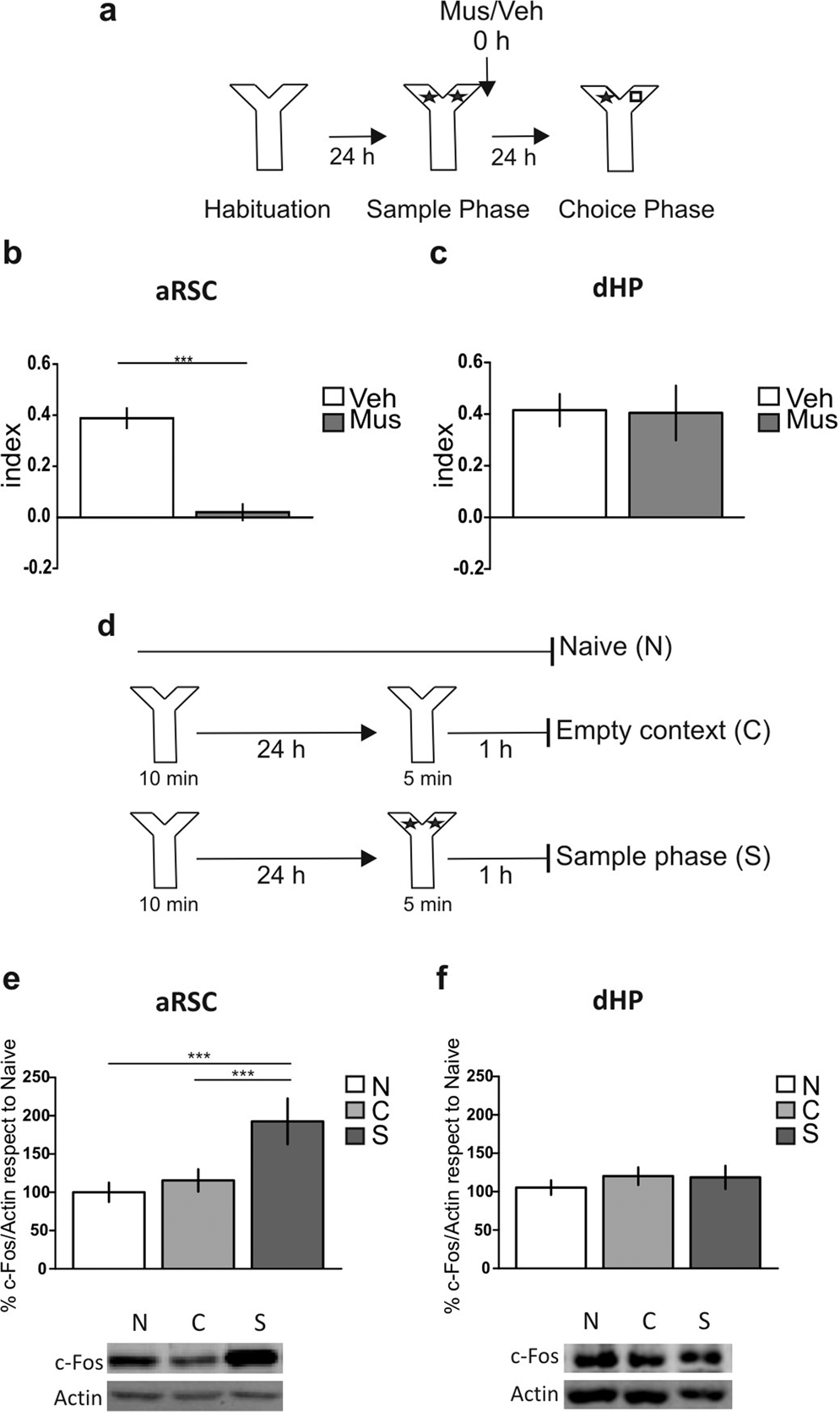Learn about brain health and nootropics to boost brain function
Anterior retrosplenial cortex is required for long-term object recognition memory

To make a comparative study about the participation of aRSC and dHP in the “what” component of the recognition memory, we decided to study object recognition memory in the non-spatial Y-maze (Y-OR) task. Due to the high walls, small corridors and the lack of explicit clues in the Y-maze, the Y-OR task has minimal spatial information and therefore a negligible “where” component. First, we validated the Y-OR task by transient inactivation of the PRh, confirming its requirement for object recognition memory (Supplementary Fig. ; p = 0.0031, t = 3.774, df = 11; Muscimol vs. Vehicle, Student’s t test, n = 5–7). Then, we analyzed the participation of the aRSC and dHP in the formation of Y-OR long-term memory (LTM) by infusing the GABA receptor agonist muscimol (0.1 μg/μl) or vehicle (saline) into the aRSC or the dHP immediately after the sample phase (training session), and we evaluated memory expression 24 h later during the choice phase (Fig. ). We found memory impairment associated to the aRSC inactivation (Fig. ; p < 0.0001, t = 6.611, df = 14; Muscimol vs. Vehicle, Student’s t test, n = 8 per group). In contrast, muscimol infusion into the dHP did not affect the Y-OR memory expression (Fig. ; p = 0.9278, t = 0.094, df = 7; Muscimol vs. Vehicle, Student’s t test, n = 4–5). To further evaluate the participation of these structures in Y-OR memory formation, we studied the levels of c-Fos expression, an immediately early gene that is a transcription factor usually upregulated in active brain structures, following a sample phase. Consistent with our behavioral data, c-Fos levels increased 1 h after the Y-OR sample phase in the aRSC (Fig. ; Bonferroni after two-way ANOVA, F = 0.31, p = 0.7347, F = 9.86, p = 0.0014, n = 4) but not in the dHP (Fig. ; two-way ANOVA, F = 0.27, p = 0.8977, F = 1.68, p = 0.2056, n = 3–5). Full-length blots are shown in the Supplementary Fig. .